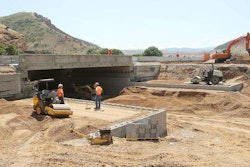
The Federal Highway Administration (FHWA) is trying to help agencies strapped for transportation infrastructure funding dollars. One way FHWA says it is doing this is by “working to promote a dynamic approach to manage the transportation network.”
Which means?
“The approach seeks to optimize performance and increase efficiency throughout the entire trip chain as seen from the traveler’s perspective. Termed Active Transportation and Demand Management (ATDM), the program advances the ability to manage, control, and influence travel demand, traffic demand, and traffic flow of transportation facilities.”
The program basically mines existing transportation systems management and operations. We’re talking about such things as monitoring systems (detectors), communication backbones, advisory systems (message signs, highway advisory radios), field personnel and vehicles (safety service patrols), centers (traffic management centers), public information portals (websites, 511), control systems (traffic signal systems, ramp meters, road/lane closure systems) and operational information exchanges (Computer Aided Dispatch [CAD] integration, data warehousing).
Using the currently most popular word for the practice, FHWA says it is “leveraging” the work of these systems so that the sum of the whole they arrive at is worth more than the parts.
FHWA Administrator Victor Mendez is big on asking whether Americans are getting as much out of the highway system as possible and pushing for ways to maximize opportunities to find new or better ways to do things, and this strikes me as something of this sort.
By making a meta analysis of what is out there, bringing in new thoughts and ideas, some interactivity and some rethinking, existing transportation management systems can be made better.









